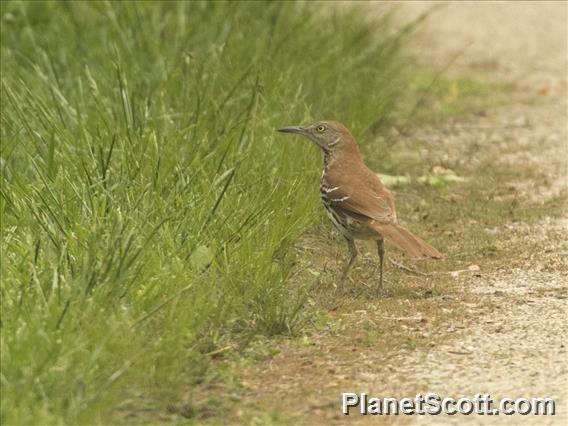Brown Thrasher (Toxostoma rufum)

Brown Thrasher (Toxostoma rufum)
×


Brown Thrasher (Toxostoma rufum)
About Brown Thrasher (Toxostoma rufum)
- Kingdom: Animals
- Phylum: Chordates
- Class: Birds
- Order: Perching Birds
- Family: Mockingbirds, Thrashers, and Allies
The brown thrasher, sometimes erroneously called the brown thrush or fox-coloured thrush, is a bird in the family Mimidae, which also includes the New World catbirds and mockingbirds. The brown thrasher is abundant throughout the eastern and central United States and southern and central Canada, and it is the only thrasher to live primarily east of the Rockies and central Texas. It is the state bird of Georgia.
Source: Wikipedia
Visits
-
-
2009-05-05
Elgin - Bluff Spring Fen, United States of America -
2009-05-08
Burnidge Forest Preserve, United States of America -
2012-06-02
Grayling, United States of America -
2012-07-10
Bluestem Prairie, United States of America -
2012-07-10
170th St , United States of America -
2013-04-17
Matagorda County Birding Nature Center, United States of America -
2013-04-19
Bolivar Peninsula, United States of America -
-
-
-
-
-



